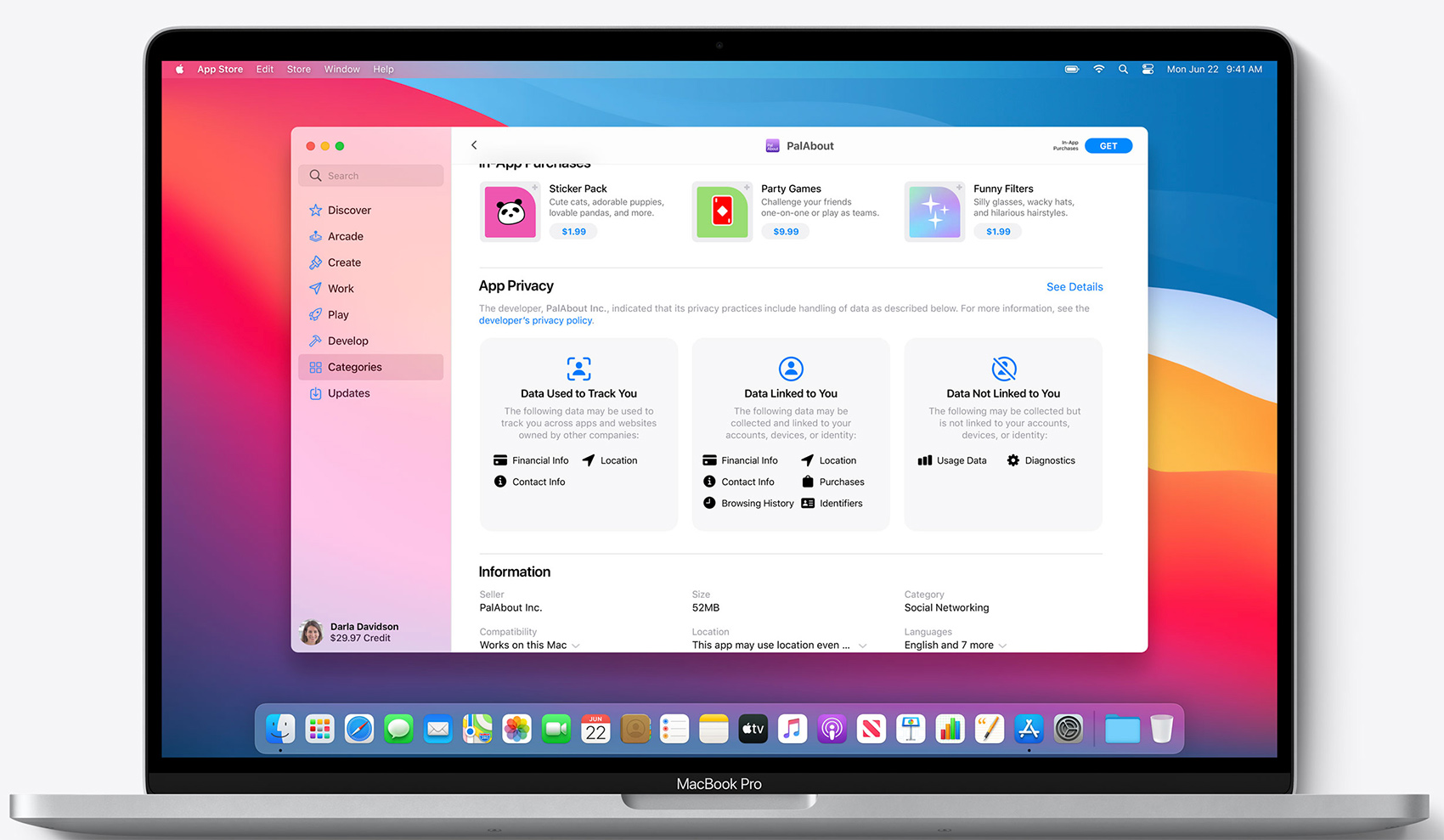MacOS Big Sur elevates the most advanced desktop operating system in the world to a new level of power and beauty. Experience Mac to the fullest with a refined new design. Enjoy the biggest Safari update ever. Discover new features for Maps and Messages. And get even more transparency around your privacy. In Mac OS 9 and earlier versions of Mac OS X, Software Update was a standalone tool. The program was part of the CoreServices in OS X. It could automatically inform users of new updates (with new features and bug and security fixes) to the operating system, applications, device drivers, and firmware. All updates required the user to enter their. Macintosh Operating System: The Macintosh Operating System (Mac OS) is an operating system (OS) designed by Apple Inc. To be installed and operated on the Apple Macintosh series of computers. Introduced in 1984, it is a graphical user interface (GUI) based OS that has since been released as multiple different versions. Initially, Mac OS was.
WHAT IS MAC (MYCOBACTERIUM AVIUM COMPLEX) AND HOW IS IT DIAGNOSED AND TREATED?
- Formerly known as 'atypical mycobacteria', 'atypical TB', or 'atypical AFB' and currently as 'nontuberculous mycobacteria' or 'NTM'. NTM includes all types or species of mycobacteria (including MAC) other than the germ of tuberculosis (TB).
- Related to Mycobacterium tuberculosis (Mtb) but it is not TB (tuberculosis).
- NTM includes a number of different species, but the most common one causing chronic lung disease is MAC.
- MAC is not spread person to person like Mtb. MAC is not contagious.
- MAC lung disease seen in HIV negative (non-AIDS) patients is a chronic lung infection and early-on is often misdiagnosed as chronic bronchitis or recurrent pneumonia.
- MAC Lung Disease is acquired from the environment (soil, air, natural waters, tap water, etc.)
- Scientists and physicians who have studied MAC believe people who develop MAC lung disease become infected because of a defect in the structure or function of their lungs (especially a disease called bronchiectasis) or in their immune systems.
- Damaged lung tissue can result from previous TB, heavy smoking, and a breathing tube disease called bronchiectasis.
- Bronchiectasis is a breathing tube (bronchial) disorder characterized by excessive mucus production, cough, and susceptibility to certain infections such as MAC or infection caused by bacteria such as Pseudomonas aeruginosa.
- Disease in men commonly relates to smoking while disease in women (non-smoking) usually relates to bronchiectasis.
- The average age of patients with MAC lung disease in men is 55 years and 67 years in women.
- Men are more likely to have cavitary MAC (holes in their lungs). Women are more likely to have non-cavitary, nodular MAC.
- Diagnosis of MAC lung disease usually requires:
- Medical history with records of symptoms:
- Cough, sputum production, shortness of breath
- Loss of appetite (anorexia is the medical term) weight loss
- Severe fatigue or tiredness with inability to perform daily tasks
- Rarely coughing up blood (hemoptysis is the medical term)
- Fever, night sweats
- Chest x-ray (a picture of your lungs internally)
- High resolution CT scan (HRCT) (similar to an x-ray but a more detailed picture)
- Sputum culture – several sputum cultures are usually performed. Your specimen coughed from your lungs is examined under a microscope (AFB smear) and also placed on special media to grow mycobacteria (AFB culture).
- Bronchoscopy – may be necessary in some cases (especially if you can not cough up sputum) but not all, and involves putting a tube down into your lungs to obtain specimens for culture.
TREATMENT OF MAC LUNG DISEASE REQUIRES A MULTI-DRUG REGIMEN (MORE THAN ONE DRUG).
- MAC is resistant to ordinary antibiotics.
- Combination of 3 drugs (all FDA approved)/dosages are based upon your clinical history, age, weight, and symptoms.
- Clarithromycin (Biaxin) or Azithromycin (Zithromax)
- Rifampin (Rifadin) or Rifabutin (Mycobutin)
- Ethambutol (Myambutol)
- The combination of medicines is given until no more MAC germs can be grown by culture of your sputum for 1 year. Average treatment period is about 15-18 months.
- Monthly sputum cultures are performed while you are on therapy and periodically when you finish your therapy to be sure your MAC is gone.
- The 3-drug treatment may be given 3 times weekly (preferably Monday-Wednesday-Friday) or daily.
- Data from previous treatment trials tells us that most patients (approximately two-thirds) who have no previous treatment of their MAC and who can tolerate the appropriate medicines will get better and be 'cured' of their MAC lung disease.
- Patients who have failed a prior drug regimen of > 6 months for their MAC are more likely to fail the standard drug regimen (almost 50%).
- Patients who take the 3-drug regimen for less than 1 year with negative cultures are more likely to relapse with disease with their same MAC strain.
- Patients who fail therapy after taking the 3 medicines are usually required to take additional medicines. Injectables which may be useful include:
- Streptomycin or Amikacin
- Amikacin can also be given by inhalation (aerosolized) and is less toxic when given in this manner.
- Monthly laboratory blood tests that include a complete blood count and comprehensive metabolic panel (CBC and CMP) to check for possible damage to blood cells, kidneys, and liver.
- Most common potential side effects/complications of medicines:
- Clarithromycin : Loss of appetite, diarrhea, nausea, abdominal pain, abnormal liver function tests (blood tests), bitter taste, mild allergic rash.
- Azithromycin : Diarrhea, nausea, abdominal pain, abnormal liver function tests (blood tests), decreased hearing, tinnitus (sounds in ears).
- Rifampin : Nausea, vomiting, liver damage, decreased platelets (cells which clot blood), body secretions (urine primarily) are orange/red.
- Rifabutin : Nausea, vomiting, decreased platelets, decreased white blood cells (cells that fight infection), eye pain (uveitis), diffuse muscle and joint aches, skin pigmentation (yellow).
- Ethambutol : Decrease in vision (especially color vision), blurriness.
- Streptomycin : Kidney damage, sounds in ears (tinnitus), hearing loss, poor balance, numbness, tingling, muscle damage, fever, headache.
- Amikacin : Kidney damage, tinnitus, hearing loss, poor balance.
If you experience these or other additional problems, you should discuss them with your physician. - Amikacin by inhalation (aerosolization) decreases toxicity to above adverse events.
Provide a list of your current medicines to your physician so he can determine any possible contra-indications. Defend pangolin eggs mac os. Machine learning with bsl demo mac os.
PULMONARY FUNCTION TESTING
What is a pulmonary function test?
Eat At Macs

Eat It Mac Os Catalina

Eat It Mac Os Catalina
Pulmonary function testing is a way to measure your breathing capacity and, therefore is an objective measure of how well you are breathing. There are several types of breathing tests that can be done during pulmonary function testing including spirometry, lung volumes and diffusing capacity. A technician will explain what you need to do during each test and will coach you during the tests to help you give a good effort. All breathing tests require more than one measurement so that you will be asked to make more than one effort for each test. Spirometry is the most commonly performed breathing test. It requires you to take in as deep a breath as possible and then blow out the air in your lungs as forcefully and fully as possible. Spirometry, therefore, measures how much air you breathe in and out and how fast you breathe air in and out. Jack or better. Spirometry is frequently performed at baseline and then after you have inhaled a bronchial dilating drug (breathing medicine) to evaluate the effect of medication on your breathing function. A night in the woods (camarones) mac os. As with all pulmonary function tests, it is very important that you make a maximal effort to insure accurate assessment of your breathing function. Lung volumes are performed while you are sitting in a small chamber called a plethysmograph (or body box) and provide further information about how much air you breathe in and out. You will be asked to perform different breathing techniques such as blowing into a tube while in the chamber. Jekyll & hyde (itch) mac os. Movies with gambling. Lung volumes are usually not performed unless there are abnormalities found on spirometry. The diffusing capacity is one measure of how well your lungs move oxygen from the lungs into the blood. The results of pulmonary function testing can tell you and your doctor how much your lungs have been affected by a disease process and help determine if specific therapy can be of benefit to you. They can also be useful for evaluating the effects of a disease or treatment over time. You will be given specific instructions about what to do with your own breathing medications when the breathing tests are scheduled. Pulmonary function testing usually takes between ½ to 1 ½ hour to complete, depending on how many of the pulmonary function tests you are asked to complete.
Also see the http://www.uthct.edu website for further information including on how to arrange a clinic visit for expert consultation on MAC. Other centers that can also provide such consultation are found under the List of Treating Institutions.

